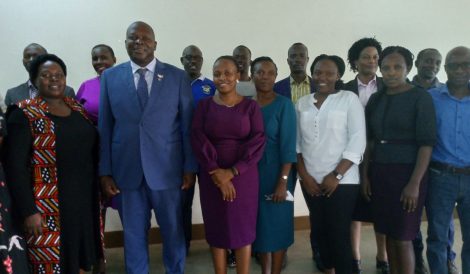Stronger Partnerships and Integrated AI Framework Key for Malaria Control Strategy in Uganda
Effective malaria control in Uganda demands stronger partnerships and a cohesive national framework to address longstanding fragmentation in planning and implementation. This was the central message of Richard Mulamba an expert in disease modeling during a webinar organized by Makerere AI Health Lab and Malaria Consortium in observance of World Malaria Day 2025.
Mulamba pointed to findings from the 2017 midterm review of the Uganda Malaria Reduction Strategic Plan (UMRSP), which highlighted systemic disjointedness in malaria programming. “This fragmentation affects not just delivery but also accurate reporting and timely interventions,” he said. “Strategic partnerships and collaboration across sectors are key to overcoming these barriers.”
He noted that the National Malaria Control Division (NMCD) has taken steps in recent years to strengthen coordination with other departments within the Ministry of Health, along with ministries, agencies, and community structures. The goal, Mulamba explained, is to leverage each partner’s strengths, close capacity gaps, and enhance both resource-sharing and expertise exchange.
A case in point is the collaboration between the Makerere AI Lab and various stakeholders, including the World Health Organization (WHO), which is facilitating the development of a National AI Integration Framework for Health. Mulamba highlighted how this initiative is enabling the cross-pollination of ideas between AI researchers, clinicians, and policymakers—helping improve both practical diagnostic tools and national health policies.
At the health facility level, Mulamba proposed the automation of routine processes such as patient registration and case reporting. He explained that AI could assist in analyzing laboratory data more efficiently and accurately than traditional methods. Integration of natural language processing tools could further extract valuable clinical information from handwritten notes or digital text, improving diagnosis and case identification. Visualization tools, such as AI-powered dashboards, would provide frontline health workers with real-time data to support clinical decisions and flag emerging threats.
District health offices would play a crucial role in aggregating data from multiple facilities, identifying anomalies in disease trends, and issuing timely alerts to guide response measures. Mulamba emphasized the importance of fusing data from different sources including consultation records, laboratory findings, and pharmacy logs to generate a comprehensive view of local health patterns.
At the national level, the framework would support predictive modeling and the formulation of evidence-based policies. Real-time surveillance data would allow national authorities to act quickly in response to outbreaks and fine-tune public health strategies.
Mulamba emphasized that partnerships must underpin these efforts at every level of the health system. From government entities and development agencies to private sector innovators and academic institutions, he called for all actors to come together around shared goals.
Yet, challenges remain. One of the most significant is the lack of awareness among rural health workers about AI-powered tools. “Many clinicians at the frontlines, especially in hard-to-reach areas, are unaware of tools that could greatly improve diagnostic accuracy and disease surveillance,” he said. He also raised concerns about ethical issues tied to data privacy and patient consent, calling for clear guidelines and streamlined ethical approval processes to support innovation without compromising trust.
Another key obstacle is the shortage of skilled human resources in the rapidly evolving fields of artificial intelligence and machine learning. Mulamba urged increased investment in training and capacity-building across disciplines. Infrastructure also remains a concern, particularly in lower-level facilities that lack the equipment or connectivity to support digital tools.
Despite these barriers, Mulamba expressed optimism about the path forward. He welcomed ongoing efforts by the AI Lab, WHO, and Ministry of Health to formalize a national AI framework. This framework, he noted, would standardize the implementation of AI tools, ensuring that they are effectively deployed and used across Uganda’s health system.
“We must adopt a systems-thinking approach,” he concluded. “Rather than pointing fingers, we need to collaborate across ministries, sectors, and communities to harness the full potential of AI in the fight against malaria.”
end


